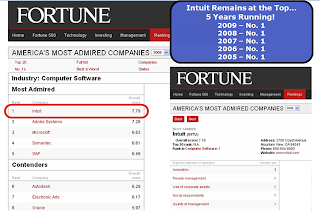It has been a while since I last blogged, especially after joining
Intuit in 08-2008. For those not familiar with Intuit engineering culture, Intuit is one of the most admired companies above the other famous companies and can attest to that (feel free to
drop me line if you want more details).

OK! enough about where I work and just a quick reminder to the readers of this blog - the comments on the blog represent my own personal view and not that of my employer or any third party (with disclaimer in place can now continue :) ).
For over a year now I have been working on a personal finance tool product called Intuit Money Manager which was launched last month in India through our partner Money Control - click here to learn more about the product and click here to get started with a 90 day free trial.

So what had this got to do with Strategic Use of Information Technology? Well! for those interested in managing your own money (like me) - we have been using tools like Quicken, Money (Microsoft withdrew the product from the market last year) and Mint.com which has been very useful in helping plan our finances.
Intuit Money Manager takes only few minutes for the consumers in India to get started and with capabilities like account aggregation, auto categorization, setting goals, reviewing trends (income & spending) and tracking investments provides a comprehensive PFM tool that is configured for the Indian market. For the folks in the US - I would direct them to Mint.com which provides similar capabilities and have personally been using this product since they launched.
In the subsequent blogs I shall try and provide some additional insights on developing globalized SaaS product and how adopting Services Oriented Architecture has helped us achieve this at a much faster pace than traditional development methodology. This approach is not just adopted by our product teams inside the company. Intuit does also provide 3rd party developers to access services at the Intuit Partner Platform and would recommend you check it out, especially if you want to develop and launch a SaaS based consumer or small business product(s) rapidly.
More to follow later and as usual feel free to drop me a line with your comments/feedback.
- Yogish


